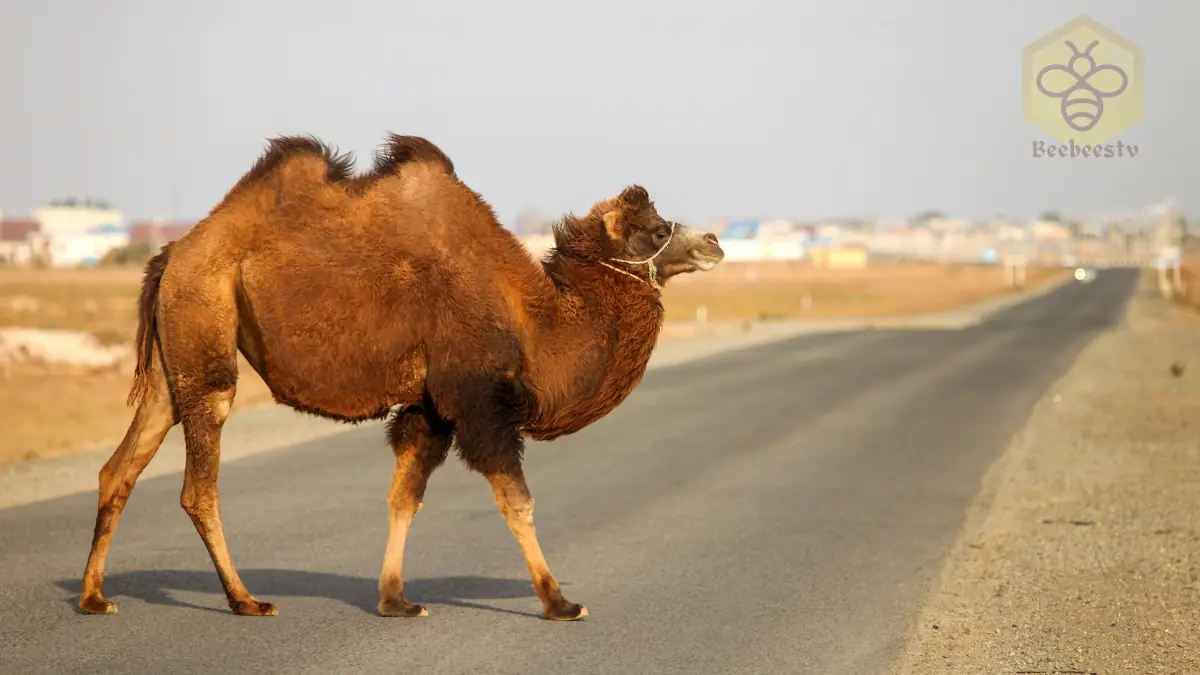The Resilient Desert Traveler
Bactrian Camel
Introduction
The Bactrian camel, a two-humped marvel of the animal kingdom, is synonymous with endurance and adaptability. Found primarily in harsh desert climates, this camel species is vital to human history and ecology.
Scientific Overview
Scientific Name
Camelus bactrianus
Common Name
Bactrian Camel
Scientific Classification
Types
They exist in two forms:
- Domesticated Bactrian Camel (Camelus bactrianus): Widely used by humans for transport and labor.
- Wild Bactrian Camel (Camelus ferus): A critically endangered species found in remote areas of China and Mongolia.
Habitat and Distribution
Bactrian camels are native to:
- Central Asia: Specifically, Mongolia, China, and parts of Kazakhstan.
- Deserts and Arid Regions: Including the Gobi Desert and steppes.
They thrive in extreme climates, enduring temperatures ranging from -40°C to 40°C.
Physical Characteristics
Size and Weight
- Height: 6–7 feet (1.8–2.1 meters) at the shoulder.
- Weight: 1,000–1,600 pounds (450–725 kg).
Appearance
- Humps: Two large, fatty humps that store energy and water.
- Fur: Thick, shaggy fur during winter that sheds in the summer.
- Features: Wide feet for walking on sand, bushy eyebrows, and closable nostrils to protect against sandstorms.
Diet and Feeding Habits
These camels are herbivores, feeding on:
- Grasses, Shrubs, and Desert Plants: Even thorny or salty vegetation.
- Adaptability: They can survive without food or water for days, drawing energy from their fat-storing humps.
Predators and Threats
Natural Predators
- Wolves occasionally prey on young or weak camels.
Human-Related Threats
- Habitat Loss: Expansion of agriculture and mining in their native regions.
- Hunting: Wild Bactrian camels are hunted for meat and hides.
Reproduction, Babies, and Lifespan
Reproduction
- Mating Season: Occurs in winter.
- Gestation Period: About 13 months.
Babies
- Calves: Usually one, though twins are rare.
- Nurturing: Calves nurse for over a year and stay with their mothers until maturity.
Lifespan
- In the wild: 20–40 years.
- In captivity: Up to 50 years.
Population and Conservation Status
The domesticated Bactrian camel is not endangered, but the wild Bactrian camel (Camelus ferus) is listed as Critically Endangered by the IUCN. Fewer than 1,000 individuals remain in the wild.
Behavior and Lifestyle
Social Structure
- Live in herds of up to 30 individuals, led by a dominant male.
Communication
- Use grunts, roars, and body language to communicate.
Day-to-Day Activities
- Spend their days foraging and resting, conserving energy in their arid habitats.
Ecological Role
These camels play a crucial role in their ecosystem by:
- Seed Dispersal: Through their droppings.
- Soil Aeration: Their movement helps maintain the desert soil’s health.
FAQs About Bactrian Camels
- How do Bactrian camels survive without water?
They can go weeks without water by metabolizing the fat in their humps for energy and hydration. - What is the difference between Bactrian and dromedary camels?
They have two humps, while dromedary camels have one. - Why are wild Bactrian camels endangered?
Habitat destruction, hunting, and competition with livestock have drastically reduced their population. - Can Bactrian camels survive in cold climates?
Yes, their thick fur and fat reserves help them withstand freezing temperatures. - Are these camels domesticated?
Most are domesticated and used for transport and labor, but a small population of wild Bactrian camels still exists.
Conclusion
The Bactrian camel is a testament to resilience and adaptability. Whether domesticated or wild, these camels have played an integral role in human culture and the environment. Efforts to conserve the wild Bactrian camel are vital for preserving this incredible species and its unique ecological contributions.
